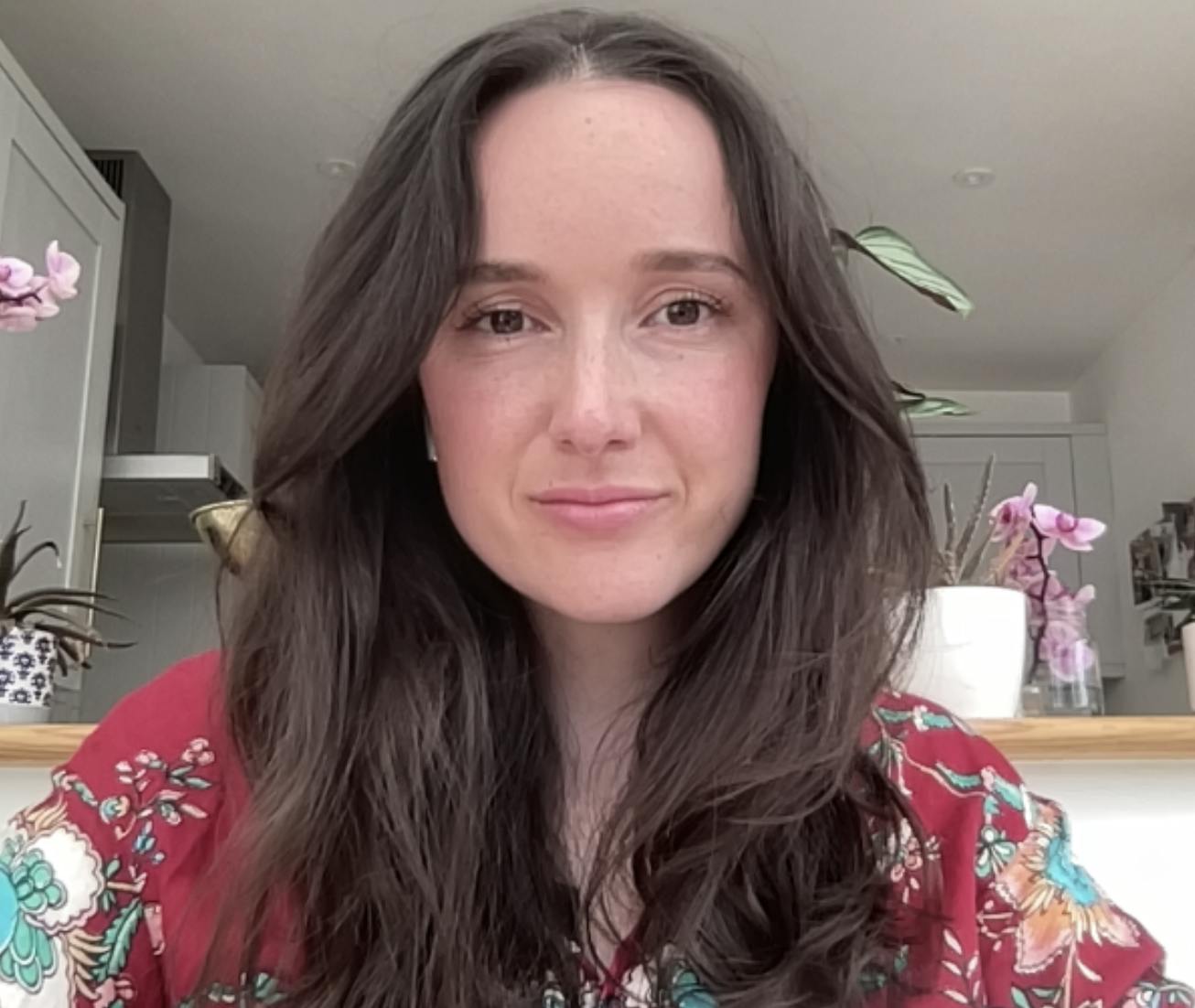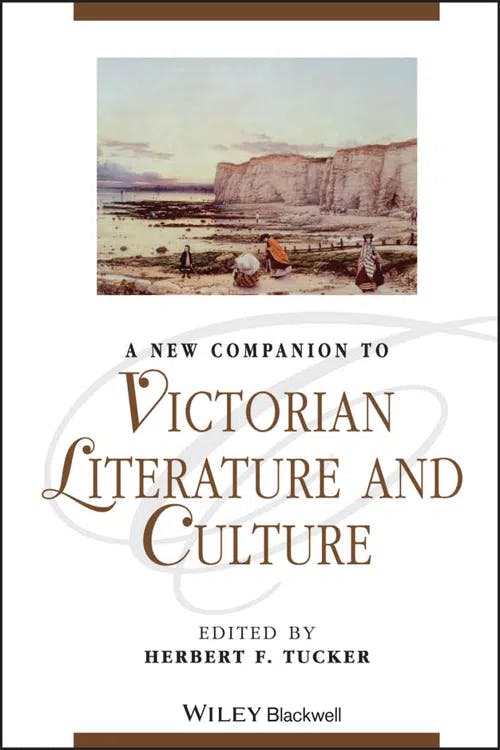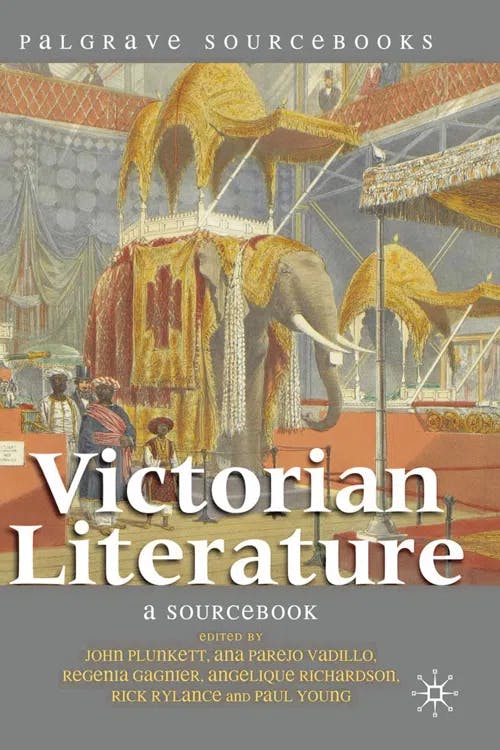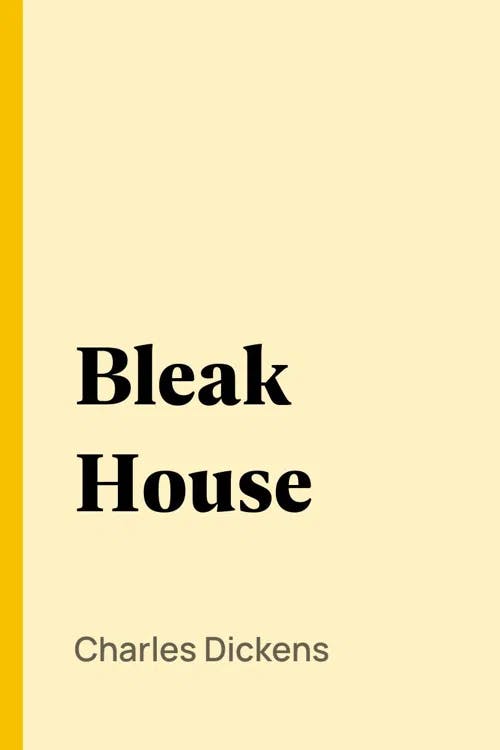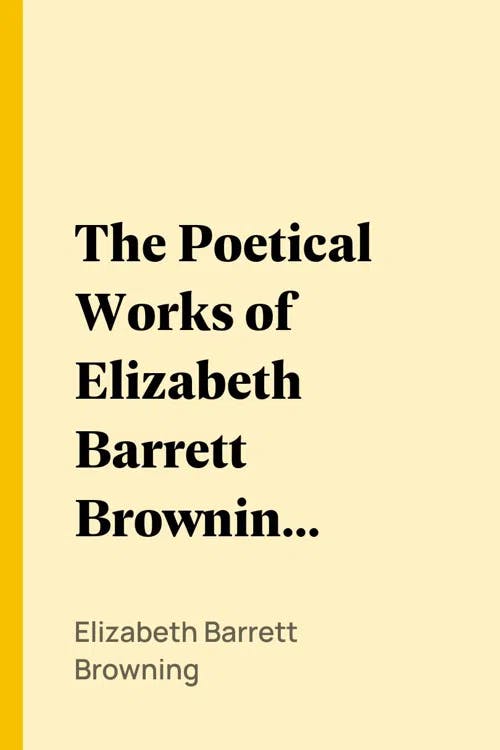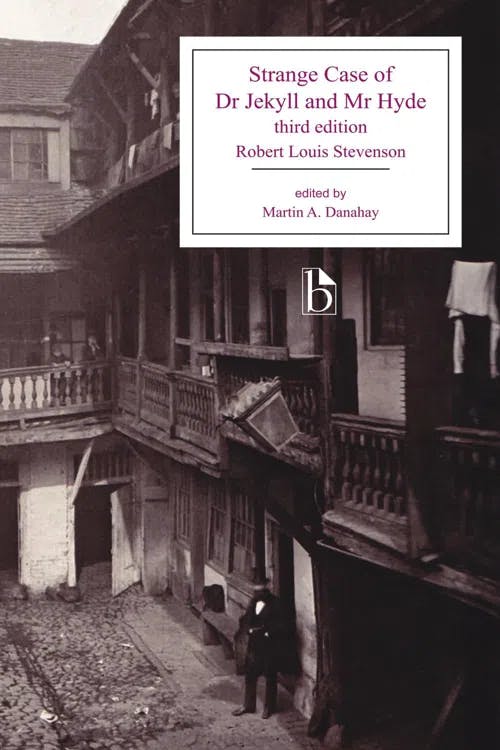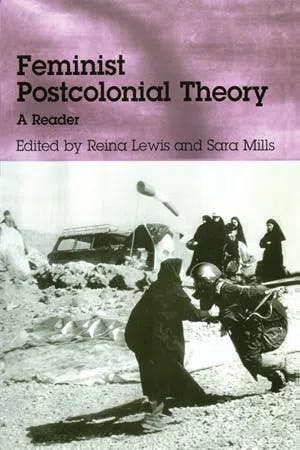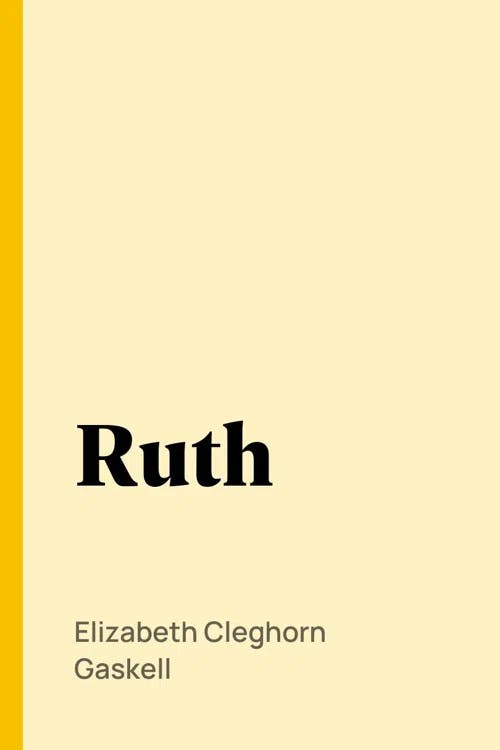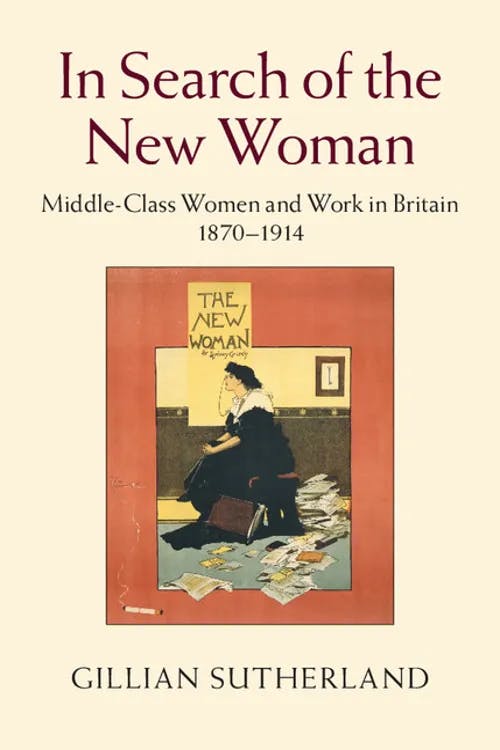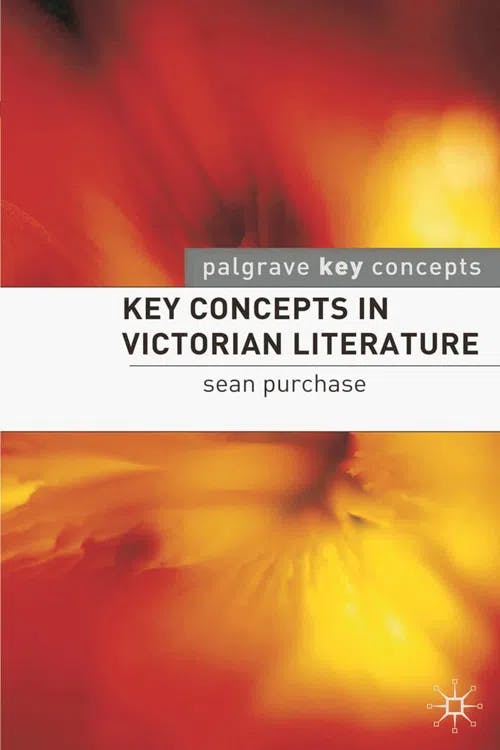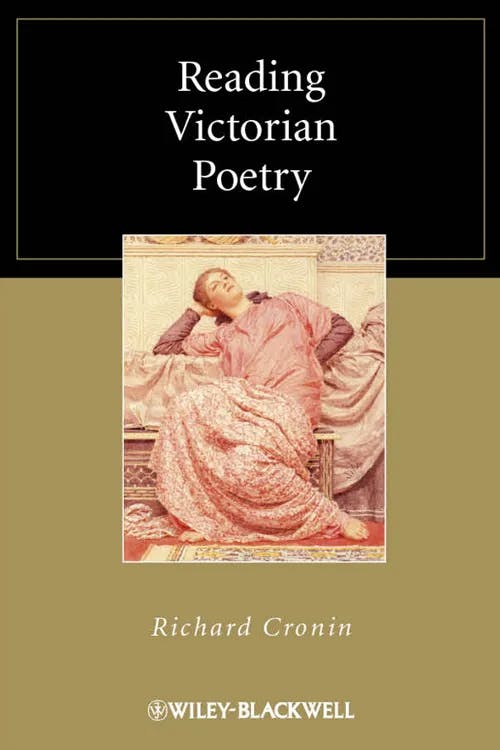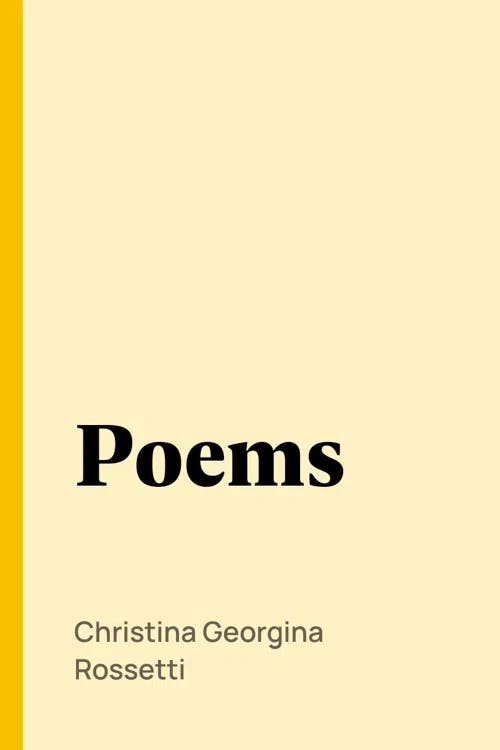What is Victorian Literature?
PhD, Media Arts and English Literature (Royal Holloway, University of London)
Date Published: 12.04.2024,
Last Updated: 12.04.2024
Share this article
Introduction
In his 1831 essay "The Spirit of the Age," the Victorian writer John Stuart Mill reflected that “[t]he first of the leading peculiarities of the present age is, that it is an age of transition. Mankind have outgrown old institutions and old doctrines, and have not yet acquired new ones” (in The Spirit of the Age, 2007). The dual notions of turbulent transit and uncertain change encapsulate many of the tensions and themes that run throughout the literature of the vast Victorian era. The Victorian period can be defined broadly by the reign of Queen Victoria (1837 to 1901) in Britain, although its temporal markers remain slippery and diffuse. The period was underscored by seismic shifts in society, which dramatically altered the way that culture was ordered. From industrialization, socioeconomic and political upheaval, urbanization, technological advancement, scientific rationalism, and a corresponding crisis of religious faith, the fabric of the Victorian age is constituted of many converging and sometimes conflicting threads. The literature from this period can be understood, then, as a response to these manifold transitions.
Many fictional figures from Victorian literature loom large in our contemporary cultural imagination: Van Helsing and the eponymous vampire clash in Bram Stoker’s Dracula (1897); Alice falls down the rabbit hole in Lewis Carroll’s Alice’s Adventures in Wonderland (1865); Sherlock Holmes and Dr Watson make their first appearances in Arthur Conan Doyle’s A Study in Scarlet (1887); Dorian Gray’s portrait collects dust in the attic in Oscar Wilde’s The Picture of Dorian Gray (1890) and Heathcliff and Catherine roam the moors in Emily Brontë’s Wuthering Heights (1847). The texts introducing these iconic characters tell us much about the period by revealing the tensions around sex, class, morality, human nature, politics, religion, work, and technology that Victorian writers were grappling with.
This study guide starts with some tentative definitions of the period and then provides a brief overview of some of the central themes that can be found in Victorian prose, poetry, and drama, to explore how Victorian writers were – to use Mill’s phrase – refashioning outgrown “old institutions and old doctrines” and forging new ones (1831, [2007]).
Defining the Victorian period
Many critics warn against defining the Victorian era purely in terms of Queen Victoria’s reign. As Lawrence Poston notes:
A literal reading of the term implies that the Victorian era begins with the accession of Victoria to the throne in 1837 and ends with her own demise in 1901. Yet the first generation of authors we now know as “Victorian” was born at the end of the eighteenth century and in the first two decades of the nineteenth. Carlyle, Mill, Macaulay, Newman were all publishing in the 1820s; Tennyson and Browning in the early 1830s. Strict adherence to the dates of reign ignores these larger continuities. (“1832”, A New Companion to Victorian Literature and Culture, 2014)
Edited by Herbert F. Tucker
A literal reading of the term implies that the Victorian era begins with the accession of Victoria to the throne in 1837 and ends with her own demise in 1901. Yet the first generation of authors we now know as “Victorian” was born at the end of the eighteenth century and in the first two decades of the nineteenth. Carlyle, Mill, Macaulay, Newman were all publishing in the 1820s; Tennyson and Browning in the early 1830s. Strict adherence to the dates of reign ignores these larger continuities. (“1832”, A New Companion to Victorian Literature and Culture, 2014)
A more diffuse definition, therefore, allows for engagement with the period’s multifaceted ideas that stretch beyond a fixed temporal bracket. These ideas, as John Plunkett et al. set out in Victorian Literature (2011), came together and “created the distinct perception of a new ‘modern’ period” of Victorianism.
Notions of the “modern” or “modernity” were formed through a number of different forces and factors. Whilst Victorian predecessors, the Romantics, heralded solipsistic expressions and emotive engagements with nature; the Victorians were interested in social issues and the question of how to live a life that was being profoundly shaped by the industrial revolution, capitalism, consumerism, science, and the ideologies of the British Empire. As Matthew Arnold wrote in 1865, “[t]he modern spirit is now awake almost everywhere” (Selections from the Prose Works of Matthew Arnold, 2004).
For more on this, see our guide “What is Modernity?”
Key themes in Victorian literature
It is impossible to encapsulate all the beliefs, approaches, and literary practices at play in Victorian writing. What follows is a brief overview of some of the main cultural themes — class, morality, empire, and gender –- born out of the “chaos and contradictions” of the Victorian period, and some examples of their literary expressions (Sean Purchase, Key Concepts in Victorian Literature, 2006).
Class
The emergence of class as a forceful presence within Victorian literature is complex, with various authors responding to the newly forming class divisions and corresponding notions of social mobility in a multitude of ways. As Alexandra Warwick notes in The Victorian Literature Handbook (2008), the period “saw the development of a language of class and an increasingly finely graded sense of its existence and significance.” These developments unfolded due to a number of factors, as John Plunkett et al. set out:
Victorian society was dramatically marked by the twofold processes of industrialization and urbanization, [where] it is important to recognize the extent to which Britain was transformed by new living conditions, working environments, modes of social interaction and organization - and the possibilities and pressure associated with such changes. (Victorian Literature, 2011)
Edited by John Plunkett et al.
Victorian society was dramatically marked by the twofold processes of industrialization and urbanization, [where] it is important to recognize the extent to which Britain was transformed by new living conditions, working environments, modes of social interaction and organization - and the possibilities and pressure associated with such changes. (Victorian Literature, 2011)
Alongside political reform, city living, and overarching ideas of social responsibility, Victorian class consciousness was also shaped by the work of Karl Marx and Friedrich Engels. Their seminal work, The Communist Manifesto, was first published in 1848, where the turbulent nature of the period is encapsulated by the famous lines: “All that is solid melts into air” (2014). Marx and Engels critiqued capitalism’s exploitation of the lower classes’ labor, and this sense of injustice can also be felt in many social problem novels of the time, like Elizabeth Gaskell’s Mary Barton (1848) and North and South (1854-1855).
Class tensions are felt in the literature of the period. For example, ideas of class anxiously propel the character Pip on his trajectory in Great Expectations (1861) by Charles Dickens. The text grapples with the question of what “a true gentleman” might be as Pip, who starts out as a blacksmith apprentice until he inherits a mysterious fortune, has to learn how to navigate London’s high society. Indeed, class divisions are cast into sharp relief for Pip, after he first visits wealthy “spinster” Miss Havisham’s house and remarks:
I thought how Joe [Pip’s brother-in-law] and my sister were then sitting in a kitchen, and how Miss Havisham and Estella never sat in a kitchen, but were far above the level of such common doings. (Dickens, 1861, [2017])
Charles Dickens
I thought how Joe [Pip’s brother-in-law] and my sister were then sitting in a kitchen, and how Miss Havisham and Estella never sat in a kitchen, but were far above the level of such common doings. (Dickens, 1861, [2017])
Upon realizing that in Miss Havisham’s upper-class house, the downstairs and kitchen areas were occupied by servants, ideas of space and “common doings” are imbued with newly forming class associations in Pip’s mind.
Many Victorian authors offered class critiques and commentaries, too. In Bleak House (1852), Dickens admonishes London’s social inequality and poverty through a convoluted and slow-moving court case which drags through the text. The novel is famously cloaked in a heavy fog, which symbolizes institutional oppression:
Never can there come fog too thick, never can there come mud and mire too deep, to assort with the groping and floundering condition which this High Court of Chancery, most pestilent of hoary sinners, holds this day in the sight of heaven and earth. (Dickens, 1852, [1997])
Charles Dickens
Never can there come fog too thick, never can there come mud and mire too deep, to assort with the groping and floundering condition which this High Court of Chancery, most pestilent of hoary sinners, holds this day in the sight of heaven and earth. (Dickens, 1852, [1997])
Elsewhere, Elizabeth Barrett Browning’s poem “The Cry of the Children” (1843) highlights the issue of child labor, writing:
How long, O cruel nation,
Will you stand to move the world, on a child’s heart,—(The Poetical Works of Elizabeth Barrett Browning, [2010])
Elizabeth Barrett Browning
How long, O cruel nation,
Will you stand to move the world, on a child’s heart,—
(The Poetical Works of Elizabeth Barrett Browning, [2010])
Barrett Browning was responding to the campaign for children’s rights, especially in factories, to protect them from long hours and awful work conditions. Themes of class, child labor, and exploitation are present in the works of many Victorian writers, such as Gaskell and Francis Trollope; such themes are also palpable in a wider literary move to represent the child’s perspective, such as What Maisie Knew (1897) by Henry James.
Morality
Victorian morality surfaces in a number of different forms throughout the literature of the period. Middle-class Victorian values typically included chastity, thriftiness, self-reliance, self-control, and discipline. These individualistic values and the emphasis on moral improvement are clear in the emergence of self-help books like the bestselling Self-Help (1859) by Samuel Smiles. As Sally Mitchell writes the “climate of mental and moral improvement was a distinctive feature of their age” (Daily Life in Victorian England, 2008). Traits like humility, hard work, self-sufficiency, and respectability were integral to this line of thought, underscoring many “rags to riches” stories, such as Oliver Twist (1838) by Charles Dickens, and perpetuated the idea that the poor could improve their station if they only worked hard enough. Remaining in an impoverished state was, therefore, seen as a moral failing. This belief is foundational to liberalism.
However, some texts, such as the poetry of Barrett Browning and social problem novels, did focus on society’s moral obligations to the poor and the immorality of child labor and workhouses.
Morality also underpinned notions of respectability that structured many of the class anxieties and ideals of the time. The presumed morality of the middle classes was called into question in several texts of the period, including Robert Louis Stevenson’s Strange Case of Dr Jekyll and Mr Hyde (1886). Stevenson's text (which deals with notions of good and evil; morality and intellectualism; and rationality and irrationality) tells the story of gentleman Dr. Jekyll, who fractures himself in two, creating the dangerous counterpart, Mr. Hyde.
As Jekyll remarks:
I learned to recognise the thorough and primitive duality of man; I saw that, of the two natures that contended in the Weld of my consciousness, even if I could rightly be said to be either, it was only because I was radically both [...]. (Stevenson, 1886, [2015])
Robert Louis Stevenson
I learned to recognise the thorough and primitive duality of man; I saw that, of the two natures that contended in the Weld of my consciousness, even if I could rightly be said to be either, it was only because I was radically both [...]. (Stevenson, 1886, [2015])
This dual awareness results in a “dreadful shipwreck” of the self for Jekyll, where the reality of human nature, desire and vice is revealed beneath the guise of respectability, encapsulating much of the tension between excited progress and troubled unrest that propelled the Victorian period (2015).
Elsewhere, Oscar Wilde offered an existential exploration of desire, sin and human nature in The Picture of Dorian Gray, suggesting that “Modern morality consists in accepting the standard of one’s age. I consider that for any man of culture to accept the standard of his age is a form of the grossest immorality” (1890, [1998]). This spurred moralistic outcry over the text’s homosexual connotations. Wilde would later become at the center of a scandal when he faced legal charges for gross indecency, where he would be cross-examined on "the love that dares not speak its name.” Wilde was imprisoned in 1895 and died in 1900 aged 46. (To learn more about the stigma surrounding sexual identity, see our study guide "What is Queer Theory?")
Victorian literature engaged with many aspects of morality and human nature, which are not only legible within the texts of the period, but also the anxious scandals, indecency trials like Wilde’s, and attitudes to crime and punishment. For more on Wilde's trial, see Dale Barleben’s Staging the Trials of Modernism (2017).
Empire
Edward Said writes in Culture and Imperialism (1993) that imperialism and empire have a “shadowy presence” in Victorian literature (2007). Following Said’s work, many postcolonial theorists have investigated the long shadows that the Age of Empire has cast, looking at the legacy of colonial rule as narrated through the literature of the period.
A key example of imperialist ideology in literature is Rudyard Kipling’s jingoistic poem, “The White Man’s Burden” (1899) which speaks to a nationalistic pride and racist imperialism that some Victorian writers upheld. The poem portrays British colonization as a moral duty of “responsibility” to “educate” and “civilize” colonial subjects. Post-colonial scholarship both within and beyond Victorian studies has unpacked and critiqued the justification of imperialism that Kipling’s poem encapsulates. For more information, see Patrick Brantlinger’s Victorian Literature and Postcolonial Studies (2009), and our guides “What is Imperialism?” and “What is Postcolonialism?”
Narratives of masculinity and adventure also contributed to imperial constructions of “Englishness”. In Empire Boys (2015), Joseph Bristow explores how children’s literature from the period enforced the nation’s colonial ideologies through adventure stories and imperial romances, as seen in Stevenson’s Treasure Island (1883), R. M. Ballantyne’s The Coral Island (1857), and Kipling’s The Jungle Book (1894).
Sean Purchase highlights the lack of engagement with the reality of imperialism in many Victorian texts, writing “Victorian fiction is typically uncomfortable with its images of the empire, and popular writers such as Dickens rarely, if at all, acknowledge it in their novels” (2006). Despite the discomfort that Purchase identifies, whether reading through omission or overt engagement, Victorian literature was steeped in imperialism. In “Three Women’s Texts and a Critique of Imperialism” (1985), Gayatri Spivak writes:
It should not be possible to read nineteenth-century British literature without remembering that imperialism, understood as England’s social mission, was a crucial part of the cultural representation of England to the English. The role of literature in the production of cultural representation should not be ignored. (in Feminist Postcolonial Theory, 2003)
Edited by Reina Lewis and Sara Mills
It should not be possible to read nineteenth-century British literature without remembering that imperialism, understood as England’s social mission, was a crucial part of the cultural representation of England to the English. The role of literature in the production of cultural representation should not be ignored. (in Feminist Postcolonial Theory, 2003)
We can see this in Charlotte Brontë’s Jane Eyre (1847), through the treatment of Mr. Rochester’s first wife Bertha Mason: a woman from the West Indies who is locked away and portrayed as a “lunatic.”
Gender
While ideas of masculinity were shaped by notions of the gentleman, imperial power, and adventure, women were conversely tied to the home. Early images of Victorian womanhood were confined to the domestic sphere, where the title of Coventry Patmore’s 1862 poem, “The Angel in the House,” came to represent a selfless and angelic ideal of femininity centered around the “worth as a Maid and Wife” (2003).
Corresponding symbols of the fallen woman — who has fallen from the angelic ideal, usually through sexual acts — were often vilified and labeled as deviant or immoral. Moral commentaries on the fallen woman can be seen in George Eliot’s Adam Bede (1859) and through allegory in Christina Rossetti’s poem “Goblin Market,” where Laura partakes of the goblin’s “forbidden fruit” (1862 [2012]). Elsewhere, Elizabeth Gaskell’s Ruth (1853) and Dickens’s Oliver Twist (1838) present fallen women — the ostracized seamstress Ruth and the selfless Nancy, respectively — more compassionately. Their narratives highlight the hypocritical societal notions of illegitimacy that lead to their deaths: as the Minister Mr. Benson attempts to read Ruth’s sermon, he is overcome by the injustices of her plight:
He looked, and, as he gazed, a mist came before him, and he could not see his sermon, nor his hearers, but only Ruth, as she had been—stricken low, and crouching from sight [...]—like a woeful, hunted creature. (Gaskell, 1853)
Elizabeth Gaskell
He looked, and, as he gazed, a mist came before him, and he could not see his sermon, nor his hearers, but only Ruth, as she had been—stricken low, and crouching from sight [...]—like a woeful, hunted creature. (Gaskell, 1853)
For more on the figure of the fallen woman, see Amanda Anderson’s Tainted Souls and Painted Faces, 2018.
Victorian lives were stratified through hierarchies of gender and power, where aside from “the obvious exception of Queen Victoria, men dominated every available public or social sphere” (Purchase, 2006). In literature, this resulted in some women writing under male pen names, like Mary Ann Evans who wrote as George Eliot; and Charlotte, Emily and Anne Brontë, who published under Currer, Ellis, and Acton Bell.
The image of the New Woman emerged throughout the Victorian era. Gillian Sutherland describes the term as
growing out of and crystallising a steadily swelling debate over several decades about the position of women of the middle classes, their scope for independence, the implications of the access to secondary and higher education which they were beginning to secure, and the legal, financial, social and psychological constraints imposed upon them by marriage (In Search of the New Woman, 2015)
Gillian Sutherland
growing out of and crystallising a steadily swelling debate over several decades about the position of women of the middle classes, their scope for independence, the implications of the access to secondary and higher education which they were beginning to secure, and the legal, financial, social and psychological constraints imposed upon them by marriage (In Search of the New Woman, 2015)
Finding shape in texts like Elizabeth Barrett Browning’s poem “Aurora Leigh” (1856), through Maggie’s sense of self in Eliot’s The Mill on the Floss (1860), the presence of the occult in Florence Farr’s The Dancing Faun (1894) and Sarah Grand’s politics, the language of the New Woman was being forged, written into a discourse of early feminism.
Style, genre, and form
The novel
The interest in the novel itself emerged within the Victorian era, spurred by a proliferation of production, the growth of a literary marketplace, increased readership, and even the formation of new genres (such as children’s literature) and new cultural modes of reading (like serialization).
Michelle Allen-Emerson remarks that “novel-reading itself was a significant cultural phenomenon of the period” (“Contextualizing the Novel in the Classroom,” Teaching Victorian Literature in the Twenty-First Century, 2017). Purchase further suggests that the prominence of the novel was due to its ability to respond to the uncertainties of the period:
[T]he Victorian novel, with its neat expositions, complications and resolutions, and the manner in which the logic of its narrative so often engineers a happy ending, provided some sort of structure for Victorians. It established, in other words, a semblance of order and consolation against the chaos and contradictions of a changing world. (Key Concepts in Victorian Literature, 2006)
Sean Purchase
[T]he Victorian novel, with its neat expositions, complications and resolutions, and the manner in which the logic of its narrative so often engineers a happy ending, provided some sort of structure for Victorians. It established, in other words, a semblance of order and consolation against the chaos and contradictions of a changing world. (Key Concepts in Victorian Literature, 2006)
Serialization was also an increasingly popular mode of publication and consumption for more wealthy readers, where magazines would publish works by Eliot, Dickens, and William Thackeray in installments. Serialized texts in the form of affordable penny periodicals like George W. M. Reynolds’ The Mysteries of London (1844-46) became incredibly popular, too, which made reading more accessible to the working classes. For more on this topic, see Mary Shannon’s Dickens, Reynolds, and Mayhew on Wellington Street (2016) and Nicole C. Dittmer and Sophie Raine’s edited collection, Penny Dreadfuls and the Gothic (2023).
Different genres flourished: detective novels like Conan Doyle’s; fantasy tales like Carrol’s Alice’s Adventures in Wonderland; gothic texts like Emily Brontë’s Wuthering Heights; and children’s literature like Anna Sewell’s Black Beauty (1877) all emerged as lively and vibrant formal genres. Many novels were characterized by a realist style, which attempted to capture the verisimilitude of daily life, such as Dickens’s Great Expectations.
Elsewhere, writers engaged in sensation fiction, which rendered social issues through scandal, shock, and taboos, like Wilkie Collins’s The Woman in White (1860), which H. L. Manse critiqued as “preaching to the nerves instead of the judgment” (Dictionary of Literary Biography, 1983). These various forms, genres, and styles speak to the diverse variety and strands of experimentation that constituted Victorian literature.
Poetry
Victorian poetry, like the novel, explored ideas using a multitude of approaches. In Reading Victorian Poetry, Richard Cronin notes that
There is no style that Victorian poets share, one reason for which is that they had too many to choose from. They had available to them, as their predecessors did not, the full history of English poetry. (2011)
Richard Cronin
There is no style that Victorian poets share, one reason for which is that they had too many to choose from. They had available to them, as their predecessors did not, the full history of English poetry. (2011)
Inspiration was everywhere. Barrett Browning and Alfred Tennyson both refashion hero narratives in “Aurora Leigh” (1856) and “In Memoriam” (1850), respectively, drawing on religion, myth and the epic tradition to do so.
New forms not only interpolated historical themes, but also drew on other mediums: dramatic monologues from Tennyson and Robert Browning formed through lyric, drama, and fiction, forming intricate narrative poems. Examples of this include Browning’s “Porphyria's Lover” (1836) and Tennyson’s “Ulysses” (1842).
Other poets crafted poetry that centered sensory experiences; where Gerard Manley Hopkins harnesses poetic meter to play to the ear, Dante Gabriel Rossetti’s poems explode with visual imagery, and Christina Rossetti’s goblin market presents a feast of fruit that is “Sweet to tongue and sound to eye” (2012).
Drama
Relying heavily on adaptation, much Victorian drama acted as a bridge between literature and theater. Julianne Smith argues for the appreciation of Victorian drama as a historical imprint of the relationships between “text and performance, text and history, text and reception, text and adaptation, text and modern media, [and] text and editorial practice” (“Teaching the ‘Forgotten’ Genre”, Teaching Victorian Literature in the Twenty-First Century, 2017). It also provides a useful record of popular culture and explicit engagement with social concerns, using what James Adams describes as an “amalgam of intrigue, sensation, idealism and domestic sentiment,” moving from the first English melodrama, Thomas Holcroft’s A Tale of Mystery (1802) to the music hall’s vaudeville and burlesque at the fin-de-siècle (A History of Victorian Literature, 2011).
Playwrights like George Bernard Shaw and Wilde played with drama to interrogate societal issues through satire. For example, Shaw’s Arms and the Man (1894) critiques warfare and his later work Pygmalion (1913) satirizes the shallow superficiality of Britain’s class divides through Eliza Doolitte’s story; Wilde’s The Importance of Being Earnest (1895) uses wit, farce, and humor to mock the institution of marriage and classist Victorian ideals of “earnestness” through a confusion of names.
Concluding thoughts
Literature of the long nineteenth century was characterized, among other things, by tension. This tension was felt in the class divisions, as in Dickens’s Great Expectations; between good and evil that fragmented Jekyll’s sense of self; between temptation and shameful repression; within the depictions of the British Empire at its most powerful and violent; and between rigid gender roles. There is a tension between the past and the future, too. As Victorian writers responded to the new reform and changes, they were looking forward to an uncertain future and anticipated much of the themes that modernism would pick up and rework. This forward-looking search for meaning in the past and present moments is encapsulated in a sonnet from Christina Rossetti’s “Later Life: A Double Sonnet of Sonnets”:
We lack, yet cannot fix upon the lack:
Not this, nor that; yet somewhat, certainly.We see the things we do not yearn to see
Around us: and what see we glancing back? (Poems, 1881, [2006])
Christina Georgina Rossetti
We lack, yet cannot fix upon the lack:
Not this, nor that; yet somewhat, certainly.
We see the things we do not yearn to see
Around us: and what see we glancing back? (Poems, 1881, [2006])
Further reading on Victorian literature & resources on Perlego
Breton, R. (2021) The penny politics of Victorian popular fiction. Manchester University Press. Available at: https://www.perlego.com/book/2663429/the-penny-politics-of-victorian-popular-fiction-pdf
Cox, K. (2021) Touch, Sexuality, and Hands in British Literature, 1740–1901. Taylor & Francis. Available at: https://www.perlego.com/book/2534657/touch-sexuality-and-hands-in-british-literature-17401901-pdf
Ehnenn, J. (2017) Women’s Literary Collaboration, Queerness, and Late-Victorian Culture. Taylor & Francis. Available at: https://www.perlego.com/book/1487239/womens-literary-collaboration-queerness-and-latevictorian-culture-pdf
Hall, J. D. (2017) Nineteenth-Century Verse and Technology: Machines of Meter. Springer International Publishing. Available at: https://www.perlego.com/book/3496740/nineteenthcentury-verse-and-technology-machines-of-meter-pdf
Marcus, S. (2017) The Other Victorians: A Study of Sexuality and Pornography in Mid-Nineteenth Century England. Taylor & Francis. Available at: https://www.perlego.com/book/1577671/the-other-victorians-a-study-of-sexuality-and-pornography-in-midnineteenthcentury-england-pdf
Showalter, E. (2020) A Literature of Their Own: British Women Novelists from Brontë to Lessing. Princeton University Press. Available at: https://www.perlego.com/book/1892060/a-literature-of-their-own-british-women-novelists-from-bronte-to-lessing-pdf
External resources
Moers, E. (1976) Literary Women. Oxford University Press,
John, J. (2016) The Oxford Handbook of VIctorian LIterary Culture. Oxford University Press.
Gilbert, S, and Gubar, S. (1979) The Madwoman in the Attic: The Woman Writer and the Nineteenth Century Literary Imagination. Yale University Press.
When was the Victorian period?
What are some examples of the key themes in Victorian literature?
Who are some famous Victorian writers?
Bibliography
Adams, J. E. (2011) A History of Victorian Literature. 1st edn. Wiley. Available at: https://www.perlego.com/book/1008213/a-history-of-victorian-literature-pdf
Allen-Emerson, M. (2017) “Contextualizing the Novel in the Classroom,” in Jen Cadwallader, and Laurence W Mazzeno (eds.)Teaching Victorian Literature in the Twenty-First Century. Springer International. Available at: https://www.perlego.com/book/3497036/teaching-victorian-literature-in-the-twentyfirst-century-a-guide-to-pedagogy-pdf
Anderson, A. (2018) Tainted Souls and Painted Faces: The Rhetoric of Fallenness in Victorian Culture. Cornell University Press. Available at:
Arnold, M. (2004) Selections from the Prose Works of Matthew Arnold. Perlego. Available at: https://www.perlego.com/book/1819684/selections-from-the-prose-works-of-matthew-arnold-pdf
Ballantyne, R. M. (2013) The Coral Island. Hesperus Press Ltd. Available at: https://www.perlego.com/book/3045793/the-coral-island-pdf
Barleben, D. (2017) Staging the Trials of Modernism: Testimony and the British Modern Literary Consciousness. University of Toronto Press. Available at:
Brantlinger, P. (2009) Victorian Literature and Postcolonial Studies. Edinburgh University Press.
Bristow, J. (2015) Empire Boys: Adventures in a Man’s World. Taylor and Francis. Available at: https://www.perlego.com/book/1643478/empire-boys-adventures-in-a-mans-world-pdf
Browning, E. B. (2010) The Poetical Works of Elizabeth Barrett Browning, Volume 2. Perlego. Available at: https://www.perlego.com/book/1728790/the-poetical-works-of-elizabeth-barrett-browning-volume-2-pdf
Browning, E. B. (2018) Aurora Leigh. Perlego. Available at: https://www.perlego.com/book/1728009/aurora-leigh-pdf
Brontë, C. (2010) Jane Eyre. HarperCollins. Available at: https://www.perlego.com/book/669630/jane-eyre-pdf
Brontë, E. (2017) Wuthering Heights. Delphi Classics. Available at: https://www.perlego.com/book/1654328/wuthering-heights-by-emily-bronte-illustrated-pdf
Carroll, L. (2016) Alice’s Adventures in Wonderland. Wisehouse. Available at: https://www.perlego.com/book/1415540/alices-adventures-in-wonderland-wisehouse-classics-original-1865-edition-with-the-complete-illustrations-by-sir-john-tenniel-pdf
Cronin, R. (2011) Reading Victorian Poetry. Wiley. Available at: https://www.perlego.com/book/1011915/reading-victorian-poetry-pdf
Darwin, C. (2018) On the Origin of Species; or: The Preservation of the Favoured Races in the Struggle for Life. Read Books Ltd. Available at: https://www.perlego.com/book/792517/on-the-origin-of-species-or-the-preservation-of-the-favoured-races-in-the-struggle-for-life-pdf
Dickens, C. (2017) Great Expectations. Delphi Classics. Available at: https://www.perlego.com/book/1653779/great-expectations-by-charles-dickens-illustrated-pdf
Dickens, C. (1997) Bleak House. Perlego. Available at: https://www.perlego.com/book/1713271/bleak-house-pdf
Dickens, C. (2017) Oliver Twist. Delphi Classics. Available at: https://www.perlego.com/book/1653775/delphis-oliver-twist-by-charles-dickens-illustrated-pdf
Dittmer, N. and Raine, S. (eds.)(2023) Penny Dreadfuls and the Gothic: Investigations of Pernicious Tales of Terror. University of Wales Press. Available at: https://www.perlego.com/book/3783678/penny-dreadfuls-and-the-gothic-investigations-of-pernicious-tales-of-terror-pdf
Doyle, A. C. (2017) A Study in Scarlet. Delphi Classics. Available at: https://www.perlego.com/book/1654200/a-study-in-scarlet-by-sir-arthur-conan-doyle-illustrated-pdf
Eliot, G. (2012) The Mill on the Floss. Dover Publications. Available at: https://www.perlego.com/book/110057/the-mill-on-the-floss-pdf
Eliot, G. (2017) Adam Bede. Delphi Classics. Available at: https://www.perlego.com/book/1654360/adam-bede-by-george-eliot-delphi-classics-illustrated-pdf
Farr, F. The Dancing Faun. Elkin Mathews and John Lane.
Gaskell, E. C. (2003) North and South. Perlego. Available at: https://www.perlego.com/book/1716418/north-and-south-pdf
Gaskell, E. C. (2000) Mary Barton. Perlego. Available at: https://www.perlego.com/book/1714754/mary-barton-pdf
Gaskell, E. C. (2003) Ruth. Perlego. Available at: https://www.perlego.com/book/1716405/ruth-pdf
James, H. (2004) What Maisie Knew. Perlego. Available at: https://www.perlego.com/book/1718121/what-maisie-knew-pdf
Kipling (2020) The Best of Rudyard Kipling: A Collection of Essential Poetry. Read Books Ltd. Available at: https://www.perlego.com/book/1693946/the-best-of-rudyard-kipling-a-collection-of-essential-poetry-pdf
Kipling, R. (2020) The Jungle Book. Vintage Books. Available at: https://www.perlego.com/book/2918516/the-jungle-book-pdf
Manse, H. L. (1983) “Sensation Novels,” in Nadel, I. B. and Fredeman, W. E. (ed) Dictionary of Literary Biography, Vol. 18: Victorian Novelists After 1885. Gale Research.
Marx, K. and Engels, F. (2014) The Communist Manifesto. HarperCollins. Available at: https://www.perlego.com/book/602671/the-communist-manifesto-pdf
Mitchell, S. (2008) Daily Life in Victorian England. 2nd edn. Bloomsbury Publishing. Available at: https://www.perlego.com/book/4171389/daily-life-in-victorian-england-pdf
Mill, J. S. (2007) "The Spirit of the Age" in Cavanagh, C (ed.) The Spirit of the Age: Victorian Essays. Yale University Press. Available at: https://www.perlego.com/book/1089920/the-spirit-of-the-age-victorian-essays-pdf
Patmore, C. (2003) The Angel in the House. Perlego. Available at: https://www.perlego.com/book/1843937/the-angel-in-the-house-pdf
Plunkett, J., et al. (2011) Victorian Literature: A Sourcebook. Bloomsbury. Available at: https://www.perlego.com/book/2997595/victorian-literature-a-sourcebook-pdf
Poston, L. (2014) “1832,” in Tucker. H. F (ed.) A New Companion to Victorian Literature and Culture. Wiley. Available at: https://www.perlego.com/book/1000660/a-new-companion-to-victorian-literature-and-culture-pdf
Purchase, S. (2006) Key Concepts in Victorian Literature. Bloomsbury. Available at: https://www.perlego.com/book/3031860/key-concepts-in-victorian-literature-pdf
Reynolds, G.W.M. (2014) The Mysteries of London. Vol. 1. Perlego. Available at: https://www.perlego.com/book/1848503/the-mysteries-of-london-v-14-pdf
Rossetti, C. (2012) Goblin Market. Dover Publications. Available at: https://www.perlego.com/book/110944/goblin-market-pdf
Rossetti, C. G. (2006) Poems. Perlego. Available at: https://www.perlego.com/book/1714656/poems-pdf
Said, E. (2007) Culture and Imperialism. Penguin.
Sewell, A. (2019) Black Beauty. Studium Legis. Available at: https://www.perlego.com/book/1377915/black-beauty-pdf
Shannon, M. (2016) Dickens, Reynolds, and Mayhew on Wellington Street: The Print Culture of a Victorian Street. Taylor & Francis. Available at: https://www.perlego.com/book/1630976/dickens-reynolds-and-mayhew-on-wellington-street-the-print-culture-of-a-victorian-street-pdf
Shaw, B. (2003) Arms and the Man. Perlego. Available at: https://www.perlego.com/book/1715983/arms-and-the-man-pdf
Shaw, B. (2003) Pygmalion. Perlego. Available at: https://www.perlego.com/book/1716151/pygmalion-pdf
Smiles, S. (2011) Self-Help. Barnes & Noble. Available at: https://www.perlego.com/book/3714186/selfhelp-barnes-noble-digital-library-with-illustrations-of-conduct-and-perseverance-pdf
Spivak, G. C. (2003) “Three Women’s Texts and a Critique of Imperialism,” in Reina Lewis and Sara Mills (eds.) Feminist Postcolonial Theory: A Reader. Routledge. Available at: https://www.perlego.com/book/1601455/feminist-postcolonial-theory-a-reader
Stevenson, R. L. (2015) Strange Case of Dr Jekyll and Mr Hyde. 3rd edn. Broadview Press. Available at: https://www.perlego.com/book/2030514/strange-case-of-dr-jekyll-and-mr-hyde-third-edition-pdf
Stevenson, R. L. (2017) Treasure Island. Delphi Classics. Available at: https://www.perlego.com/book/1653890/treasure-island-by-robert-louis-stevenson-illustrated-pdf
Stoker, B. (2017) Dracula. Delphi Classics. Available at: https://www.perlego.com/book/1654607/dracula-by-bram-stoker-delphi-classics-illustrated-pdf
Sutherland, G. (2015) In Search of the New Woman: Middle-Class Women and Work in Britain 1870-1914. Cambridge University Press. Available at: https://www.perlego.com/book/4226122/in-search-of-the-new-woman-middleclass-women-and-work-in-britain-18701914-pdf
Warwick, A. (2008) “Class,” in Warwick, A. and Wills, M. (ed.) The Victorian Literature Handbook. Bloomsbury. Available at: https://www.perlego.com/book/393263/the-victorian-literature-handbook-pdf
Wilde, O. (1998) The Picture of Dorian Gray. Broadview Press. Available at: https://www.perlego.com/book/2030356/the-picture-of-dorian-gray-pdf
Wilde, O. (1997) The Importance of Being Earnest: A Trivial Comedy for Serious People. Perlego. Available at: https://www.perlego.com/book/1718385/the-importance-of-being-earnest-a-trivial-comedy-for-serious-people-pdf
PhD, Media Arts and English Literature (Royal Holloway, University of London)
Polly Hember is a researcher, writer, and visiting tutor working on modernism and queer networks. She holds a PhD in Media Arts and English Literature from Royal Holloway, University of London, where her doctoral thesis attended to the neglected literary works of “the POOL group”. Her research interests include twentieth-century literature, queer theory, affect studies, technology, and visual cultures. She has published in Modernist Cultures and Hotel Modernisms (Routledge, 2023), and currently co-hosts the Modernist Conversations podcast.
